Behaviour Management Teaching Resources
Bring your behaviour management to the next level with printables and digital teaching resources created by teachers for teachers like you!
This collection of teacher-created resources is designed to support primary teachers as they implement their behaviour management strategies with printable reward charts, motivational posters and more!
Looking for tips and ideas to make your behaviour management more successful? Take a peek at some strategies from our teacher team!
What Is Behaviour Management?
Behaviour management is a proactive strategy for teachers to handle behaviour in the classroom. By setting up solid student organisation strategies, creating clear rules and expectations and providing consistent feedback, teachers set students up for success.
A good behaviour management strategy will give students:
- Specific expectations
- Positive reinforcement when expectations are met
- Fair and consistent consequences when expectations are not met
For example, of the most popular behaviour management strategies these days is CHAMPS, which stands for Conversation, Help, Activity, Movement and Participation. The goal is to provide students with an instructional structure that promotes responsibility and motivates students.
Why Is Behaviour Management Important?
Strongly backed by research, behaviour management strategies like CHAMPS have been shown to:
- Provide students with a sense of connection to school and their peers
- Promote a productive learning environment
- Minimise classroom disruptions
Behaviour Management Strategies
Before we dig in too deeply, it's worth stressing that the goal of the strategies you're about to read is to accentuate the positive, that is, to keep control of the behaviour in your classroom in a positive way.
We've also included a mix of strategies that will help you prevent negative behaviour as well as some simple things you can do to curb unwanted behaviour in the classroom.
Redirect
This technique is simple, yet effective. When you notice a child is off-task, simply move their attention from one thing to another. For example, if one student is distracting another student, you may direct their attention to the work at hand by saying you'll be over in a few minutes or simply asking that student what they are up to.
Ignore Secondary Behaviour
When a child is being warned about inappropriate behaviour, you may notice a secondary behaviour, such as an eye roll or a delayed response to a question. This behaviour is often to avoid humiliation in front of peers.
If the initial poor behaviour has stopped, ignoring the secondary behaviour — as long as no one is in danger and it hasn't caused additional classroom disruption — can prevent the situation from escalating. If you feel you need to, you may opt to talk to that student one on one after the lesson to reflect on the situation (without the audience of the other students).
Plan Your Transitions
A transition in a classroom is when a student moves from one activity to another. It can be a significant change such as transitioning from a PE lesson back into the classroom or a more minor change such as transitioning from time on the carpet back to their seats.
For little brains, transitions can be tricky as they need to go from an active state to a focused state ready for learning, and this is where inappropriate behaviour may start to fester.
Planning for how you and your students should transition can help avoid this situation from escalating. A simple transition for the example of going from PE back to class, for example, could be to use a fun movement such as walking like a ballet dancer back to class.
Make sure to explicitly teach students what they should be doing during transitions, so they know the sort of behaviour you expect!
Offer Choices
Providing a student choice is extremely powerful! It makes them feel like they are in the power seat, when in fact, you've planned it out beautifully! When you notice inappropriate behaviour, instead of issuing a demand, offer a student a choice of two options. The first choice would be the route you'd like them to take. The second is the consequence of not taking the first option.
For example, 'Zane, would you like to remove yourself from the distracting spot you're sitting in, and complete your work? Or, would you like to stay with me at lunchtime to complete the work then?'
You'll find that most of the time, the student will take the better option in this scenario.
Attention Grabbing
This is similar to the 'redirect' option, but this is a strategy to use if a number of students are starting to get off task. Use some fun attention-grabbing techniques like call and response ( you can download our Attention Grabbing Phrase Cards and use those!).
You can then redirect the group's attention back to the work by providing some more information that may support them in finishing off the task.
Use Positive Non-Verbal Reminders
You don't always have to use your voice for your behaviour management to work. Non-verbal reminders can be equally powerful and limit the disruption to the class. Simple non-verbals like stopping what you're saying and smiling at the student who may be off task is sometimes all that is needed for some students. This lets them know you know they're off-task in a gentle way.
Another non-verbal reminder is to simply lower your body down to the level of the child while you continue with the teaching, or, a simple tap on their desk as you walk past.
Set Up a Calm Corner
Little children experience BIG emotions, and often when they are trying to deal with these big emotions, they struggle with self-regulation.
Another behaviour management strategy that will work for some children is just some time away from the hustle and bustle of the classroom. If you have the space, set up a corner of the classroom for students to 'chill out.' You can fill the space with fidget toys, weighted blankets, wobble cushions, a tub of sensory toys and similar objects, plus some mindful colouring-in sheets!
If you are noticing a student that isn't responding to the smaller behaviour management strategies, 5 minutes in the chill-out corner/area may help this student.
Another idea — Sending a student to another teacher with a 'note' that says something simple such as 'John needed some space.' This gets the student out and about, and gives them some purpose by having the very important job of delivering the note to the other teacher.
Utilise Movement
We know a student's attention span is short, and yet we expect them to sit and listen and use their brains for long periods of time ... often longer than their age allows. Ensuring you have had a lot of movement integrated into your day is a great way to limit the number of behaviour situations you may encounter in a day.
It could be as simple as a 'stop work and stretch at your desks' type situation, but you may be surprised by how planning these movement breaks into your day can improve behaviour in the classroom.
- Plus Plan

Editable Student Award Certificate Template Pack
Reward students with End-of-Year merit awards specifically tailored to their special strengths and abilities with a customisable student award certificate template.
- Plus Plan

Meet The Teacher Presentation Template
Introduce yourself and your classroom expectations to parents and students with a customisable Meet the Teacher Slideshow!
- Plus Plan
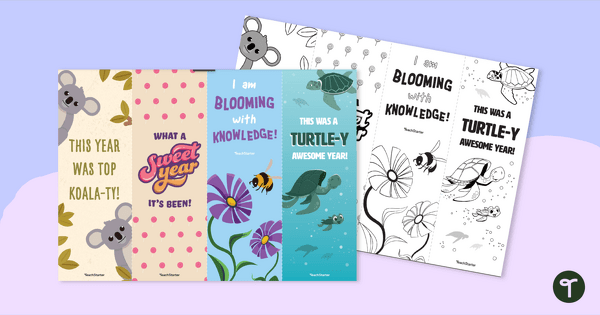
Last Day of School Printable Bookmarks
Send your students off on holiday and inspire them to read with printable End-of-Year bookmarks to colour.
- Plus Plan

Classroom Jobs Display
Keep track of classroom responsibilities with a Classroom Jobs Display!
- Plus Plan

Back to School – Meet the Teacher PowerPoint Template
Use an editable slide deck during to foster communication during your 'Meet the Teacher' or 'Back-to-School Parent Information' event.
- Plus Plan
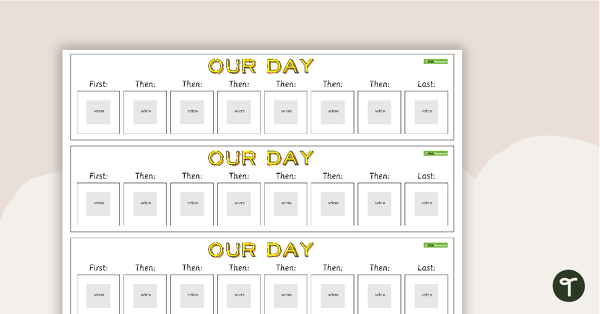
Visual Daily Timetable - Desk Strip
A visual timetable for students who could benefit from having the days activities displayed on their desk.
- Plus Plan

I'm Done! Early Finishers Choice Board Display
Build a useful ‘I’m Done, Now What?’ classroom display with a printable early finisher choice board display.
- Plus Plan

Noise Meter Classroom Display
Guide your students in determining the desired voice levels throughout the day with this colourful classroom display.
- Plus Plan

Visual First-Then Schedule for the Classroom
Communicate a sequence of events with this visual first-then board and set of 48 picture cards.
- Plus Plan

THINK Strategy - Think Before You Speak Poster
Promote positive communication using the THINK strategy and our printable Think Before You Speak Poster.
- Plus Plan

Teacher Waiting Room - Clip System
Calm classroom chaos when students need one-on-one help from the teacher with a printable Teacher Waiting List Clip System!
- Plus Plan

Attention-Grabbing Phrase Cards - Call and Response
Display and use a variety of call and response phrases in your classroom with our printable attention-getter cards.
- Free Plan

Classroom Procedures Checklist
Determine and track which classroom procedures and routines you will teach at the beginning of the school year with a classroom procedures checklist and tracking sheet.
- Plus Plan

Superheroes - Desk Reward Chart
Motivate and reward students in the classroom with a set of superhero themed desk charts.
- Plus Plan
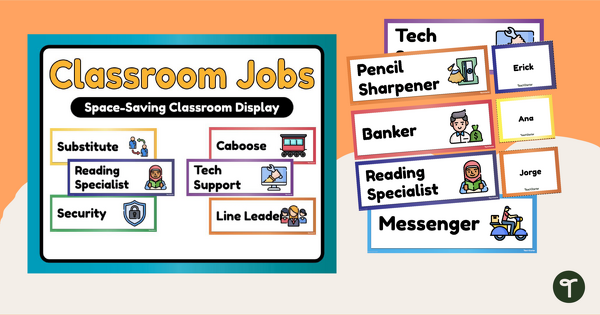
Classroom Jobs for Students - Bulletin Board
Keep track of classroom responsibilities and save wall space with a space-saving Classroom Jobs Display!
- Plus Plan

What are Desk Pets? Introduction Slide Deck
Introduce your students to your Desk Pet Classroom Reward System with an engaging slide deck.
- Plus Plan

Growth Mindset Colouring Pages
Inspire creativity and encourage your students to think positively with a set of growth mindset colouring pages.
- Plus Plan

Noise Metre Classroom Poster
Remind your students of the appropriate noise level within the classroom with our noise monitor poster.
- Free Plan

Free iPad Rules Classroom Poster
Display this classroom poster to set the boundaries and rules around using school iPads in the classroom.
- Plus Plan

Cooperation Puzzles - Teamwork Activity
Explore the benefits of cooperation with a tangram-style team-building activity.
- Plus Plan

Testing Gift Tags for Students
Give a confidence boost to your students before heading into a test or exam with these testing gift tags.
- Free Plan

Classroom Rules and Expectations – Cut and Paste Worksheets
Start your year off right by reviewing classroom rules with a cut-and-paste, writing and drawing activity.
- Plus Plan

Race to 50: Cooperation Challenges
Explore the benefits of cooperation with a set of team-building number race activities.
- Plus Plan

Behaviour Reward Charts - Stars
Reward positive behaviour in style with a printable behaviour sticker chart.
- Free Plan
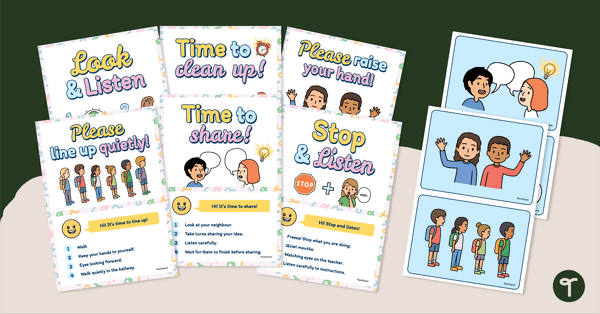
Behaviour Expectations Visual Cue Posters
Set clear behaviour expectations with these visual cue posters for the classroom.
- Plus Plan

Big Problem or Little Problem? – Sorting Activity
Use our Big Problem vs. Little Problem activity cards and worksheets to help your students learn to manage peer relationships in the classroom.
- Plus Plan

Frequency of Classroom Behaviour Observation Template
Use a printable behaviour observation template to track behaviour based observations and student progress toward behaviour goals.
- Plus Plan
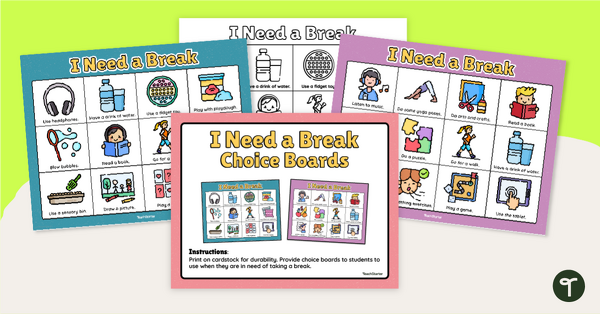
I Need a Break - Choice Boards
Help upset students regulate their emotions in the classroom with our printable ‘I Need a Break!’ choice boards.
- Plus Plan

Classroom Catastrophe Scale – Display
Help your students gauge the severity of everyday challenges with this wall display.
- Plus Plan

Digital Reward Chart – Marble Jar
Celebrate classroom successes with a fully digital marble jar classroom reward chart.
- Plus Plan
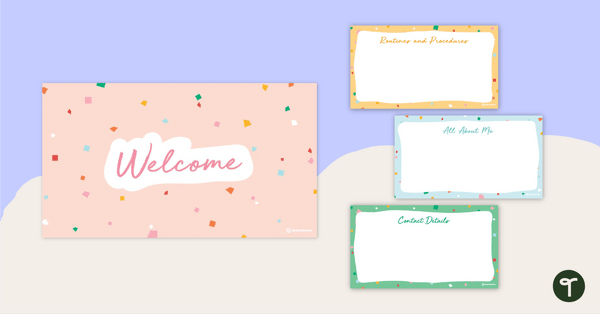
Parent Information Night PowerPoint Template
Prepare for your parent information night with a customisable slideshow template.
- Plus Plan

Our Classroom Bee - Attitudes Rule Posters
Promote positive behaviour in the classroom with our Bee-Attitudes classroom display.